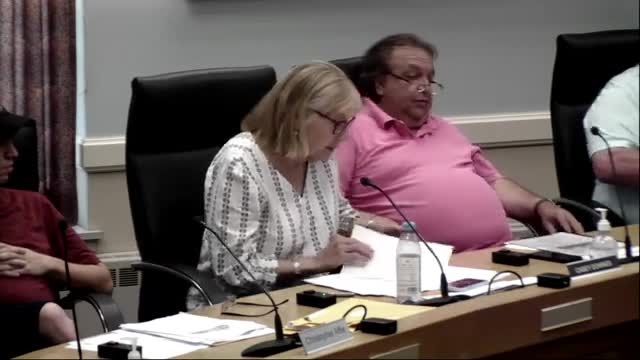Dispute erupts over traffic congestion and safety concerns
July 08, 2024 | Town of Cheshire, New Haven County, Connecticut

This article was created by AI summarizing key points discussed. AI makes mistakes, so for full details and context, please refer to the video of the full meeting. Please report any errors so we can fix them. Report an error »

During a recent government meeting, a heated discussion emerged regarding traffic concerns related to a proposed development in Cheshire. The dialogue centered on the implications of increased traffic congestion and safety issues, with differing opinions from officials and community representatives.
One commissioner expressed concern over a memorandum from Hinkley Allen, interpreting it as an acknowledgment of potential congestion, despite assurances that safety would not be compromised. The commissioner emphasized the importance of considering a letter from the town's chief of police, who, while not a traffic expert, has significant experience managing local traffic issues. The chief's lengthy correspondence indicated that the development could exacerbate existing traffic conditions, prompting the commissioner to advocate for a cautious approach.
In response, the traffic expert clarified that the projected increase in traffic from the development—estimated at 27 to 29 trips during peak hours—would not significantly impact overall traffic operations. He argued that the additional traffic would constitute less than 2% of current volumes, suggesting that this increase is negligible.
The commissioner countered this point, asserting that any increase, even if minor, could still contribute to existing problems. The debate highlighted a fundamental disagreement over the interpretation of \"significant\" in the context of traffic impact, with the commissioner maintaining that a 2% increase is indeed significant.
The meeting underscored the complexities of balancing expert assessments with community concerns, as officials navigated the implications of the proposed development on local traffic dynamics. As discussions continue, the perspectives of both the traffic expert and local authorities will play a crucial role in shaping the final decision.
One commissioner expressed concern over a memorandum from Hinkley Allen, interpreting it as an acknowledgment of potential congestion, despite assurances that safety would not be compromised. The commissioner emphasized the importance of considering a letter from the town's chief of police, who, while not a traffic expert, has significant experience managing local traffic issues. The chief's lengthy correspondence indicated that the development could exacerbate existing traffic conditions, prompting the commissioner to advocate for a cautious approach.
In response, the traffic expert clarified that the projected increase in traffic from the development—estimated at 27 to 29 trips during peak hours—would not significantly impact overall traffic operations. He argued that the additional traffic would constitute less than 2% of current volumes, suggesting that this increase is negligible.
The commissioner countered this point, asserting that any increase, even if minor, could still contribute to existing problems. The debate highlighted a fundamental disagreement over the interpretation of \"significant\" in the context of traffic impact, with the commissioner maintaining that a 2% increase is indeed significant.
The meeting underscored the complexities of balancing expert assessments with community concerns, as officials navigated the implications of the proposed development on local traffic dynamics. As discussions continue, the perspectives of both the traffic expert and local authorities will play a crucial role in shaping the final decision.
View full meeting
This article is based on a recent meeting—watch the full video and explore the complete transcript for deeper insights into the discussion.
View full meeting
